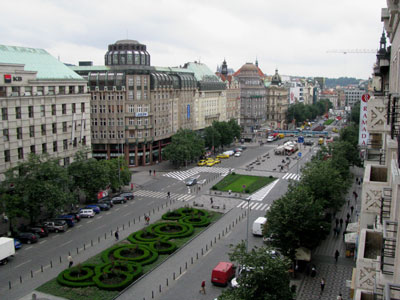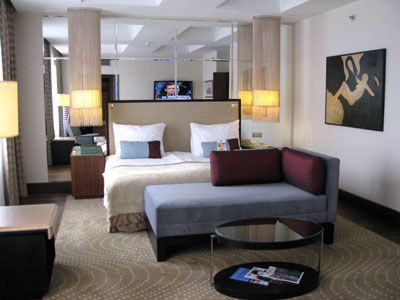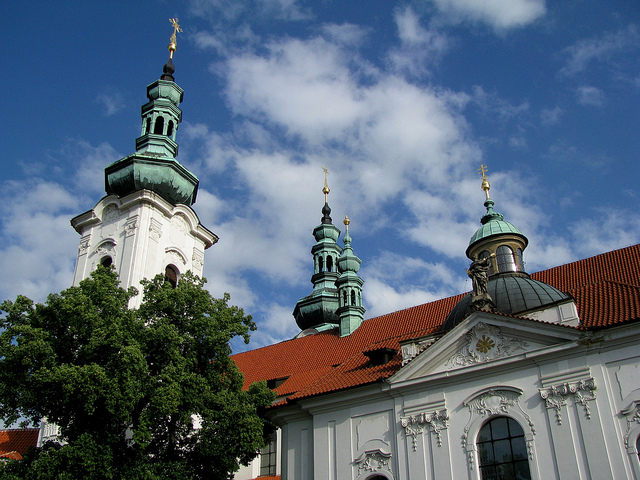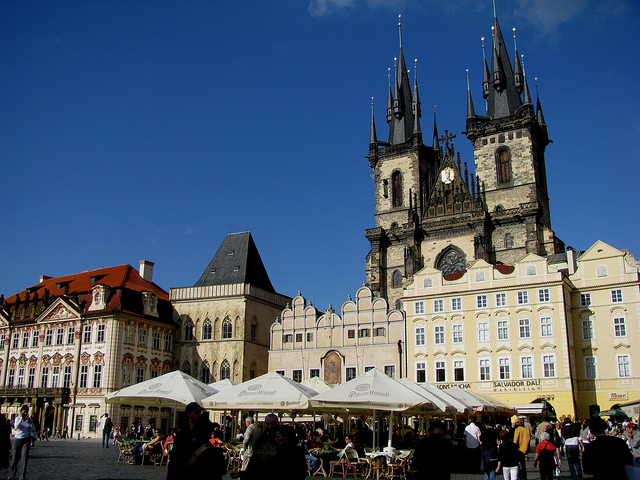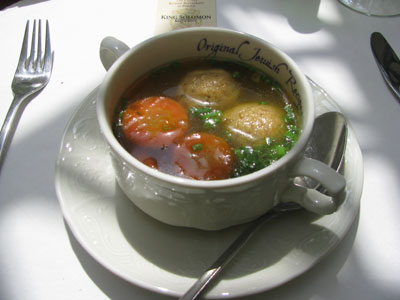I then had a chance to see the conference facilities which are distinguished by the natural daylight that streams in through the large windows and doors. A separate room in the corner accommodates an interpreter’s booth for conferences where simultaneous interpretation services are required.

Conference room with lots of daylight
The foyer just outside the conference room is semi-circular and features aesthetic wood carvings that are an original feature from the 1950s. A few steps further is a large terrace that looks out over Wenceslas Square. In addition to the fabulous view it is adorned by a series of oversized stone carvings that embellish the recently cleaned façade of the hotel. Conference delegates sure would enjoy a little coffee break in the foyer and on the terrace of the Hotel Jalta.

Recently restored stone sculptures on the facade of the Hotel Jalta
Heading down on an impressive spiral staircase I reached the ground floor again and arrived in the Como Restaurant which offers light Mediterranean cuisine and an extensive wine selection. Once arrived on the ground floor, I connected with the General Manager of the hotel, Jan Adamek. We started talking in the lobby, right next to the crown jewel of the Hotel Jalta: an original 1980 painting by Andy Warhol of Franz Kafka. Only four of these painting were ever made. Franz Kafka is one of Prague’s most well-known personalities, a German-speaking Jewish writer of the early 20th century. Although his work was never acknowledged during his lifetime, today Franz Kafka’s writings are widely accepted as among the most influential in Western literature. The owners of the Hotel Jalta were able to acquire this painting at an auction at Sotheby’s in London.

General Manager Jan Adamek in front of the Andy Warhol portrait of Franz Kafka
Jan also explained that the entire hotel was renovated from top to bottom for about 3.5 million years. Going back to the hotel’s history he indicated that construction on the hotel was already started in 1954, and the planned completion date was 1956, but the hotel did not open until 1958. Last year the hotel celebrated its 50th anniversary, and at this occasion the entire façade of the hotel was cleaned of the accumulated grime and soot which restored the 1950s sculptures to full beauty. As part of the celebrations, a 50% discount was offered to anyone celebrating a 50th anniversary last year.

Hotel Jalta: a popular getaway destination right on Wenceslas Square
Shedding more light on the Cold War history of the Hotel Jalta, Jan explained that the hotel was also equipped with a nuclear bunker that accommodated a hospital with two operating rooms. Other rooms were available for accommodation, administrative offices and bathrooms, and the original ventilation system still works. This underground facility was completely protected from possible nuclear and other attacks from outside, and more than 200 people could find refuge in the underground bowels of the Hotel Jalta.

Corridor on the fifth floor
A complete emergency plan existed and large supplies of food and water were on hand in case a nuclear war was to erupt. Communist officials would certainly have sought a safe haven at the Hotel Jalta in such an event. The underground bunker had four escapes, two of them opened up through the pavement on Wenceslas Square. The underground bunker at the Hotel Jalta is a true memento to the Cold War period and Jan Adamek added that there only two buildings like this in all of Europe.

More facade details
Hotel Jalta was built in the so-called “Socialistic Diagonal Style” – a strongly Russian-influenced style of architecture. When the hotel was built, skilled carpenters and other trades-people from the pre-Communist period were used. All the fittings and details were custom-made and of fantastic quality. Hotel Jalta was long regarded as the Pearl of Prague and important foreigners and statesmen visited it, not knowing that all the rooms were bugged. Every single room was equipped with secret listening devices to spy on the foreigners and possibly glean insight into secret western plans. This lasted all the way up until the Velvet Revolution in 1989 and the Fall of Communism. Even afterwards and during the renovations, electronic listening devices were still being found in different rooms of the Hotel Jalta.

Amazing view over Wenceslas Square from the Hotel Jalta
From Communist showpiece to secret bunker to modern luxury boutique hotel, the Hotel Jalta has been a treasured fixture in the heart of Prague for more than a half century now, and I was fortunate to have seen the end results of this transformation.
